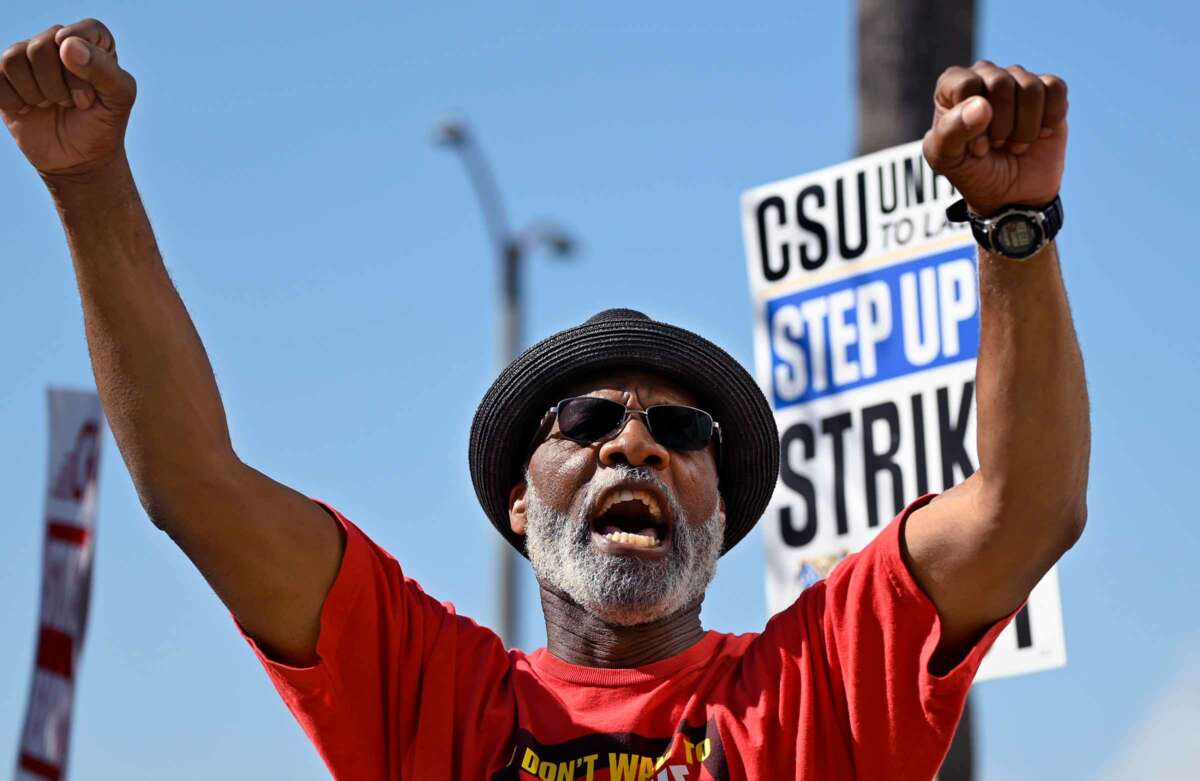Faculty at 23 California State University campuses are preparing to strike. They teach nearly half a million students.
After 95 percent of voting members authorized a strike on October 30, the 29,000-member California Faculty Association plans to roll out strikes at Cal Poly Pomona December 4, San Francisco State University December 5, Cal State Los Angeles December 6 and Sacramento State University December 7.
The CFA reopened four broad sections of their contract in May, demanding a 12 percent salary increase, more manageable workloads, more counselors for students, the right to counsel when approached by campus police, more paid leave, and more lactation rooms and gender neutral bathrooms and changing rooms on campuses.
CSU has proposed a 5 percent raise and rejected all of the CFA’s other proposals.
Pay Lagging
The biggest point of contention has been pay, as the CFA has rallied around the slogan “time for 12!” (percent) during this round of negotiations.
“Most of my colleagues are lecture faculty members, and they cannot survive in the Bay with what the university pays them,” said Blanca Missé, an associate professor of French at SFSU. Lecture faculty don’t have guaranteed course loads, and may struggle when classes are cut.
Missé said it was primarily the lagging wages that caused the union to reopen their contract.
CSU claims that faculty salaries align with comparable institutions. CSU spokesperson Hazel Kelly cited a 2022 faculty compensation study.
But Brad Erickson, CFA Chapter President at San Francisco State University, said the study doesn’t compare CSU schools with the University of California system or California’s community colleges and instead compares them to schools in Texas and Florida.
In bargaining, the CSU has told the union that they do not have the money to afford a 12 percent salary increase, said CFA President Charles Toombs. However, Erickson pointed to the 2023 Bunsis Study which stated that the union’s proposal “can be met by the significant annual operating cash surpluses that CSU has generated for many years.”
Erickson said that the CSU’s rejection of the more modest proposals such as increasing the number of lactation rooms, gender neutral bathrooms, changing rooms, or allowing faculty to request counsel when approached by police, has been alarming.
“There is no explanation whatsoever why they have not been able to come to the table with some counterproposals on these demands,” said Missé.
CSU spokesperson Kelly said the CSU already provides lactation spaces for employees and students, and that the CFA’s proposals on faculty rights would violate the CSU’s collective bargaining contract with the campus police union. She did not comment on adding gender neutral bathrooms or changing rooms.
Strike Fomo
The last time the CFA went on strike was in 2011 when CSU Dominguez Hills and CSU East Bay went on strike for one day.
Missé said that striking fell out of fashion at CFA after that, but the tide changed in 2018 with the Red for Ed strikes.
“The CFA leadership, when I joined, was of a mindset that a strike action is powerful when it’s [just] a threat,” Missé said. “Then striking became cool, and [the CFA’s leadership] have FOMO [fear of missing out].”
Missé, who is from Catalonia, said that the attitude toward striking among U.S. unions is fundamentally backwards. “We have tons of t-shirts still in the union office that say ‘I don’t want to strike, but I will,’” Missé said. “[Striking] is the only way to deliver a contract that workers are going to be able to accept.”
Erickson said that the CSU is trying to divide students from the faculty by claiming their recent round of tuition hikes are intended to pay for faculty raises, but it isn’t working. Erickson noted that at the first strike preparation at SFSU there even were more students than faculty. Later meetings drew more faculty than students, he added.
CFA president Toombs also noted that labor unions have regained some of their popularity among the American public.
“I think what is happening now is just not about the CFA,” said Toombs, a San Diego State Africana Studies professor. “It is the labor movement in general… [it] has changed to where workers are prepared to go on strike and withhold their labor.”
This article was originally published at Labor Notes.
5 Days Left: All gifts to Truthout now matched!
From now until the end of the year, all donations to Truthout will be matched dollar for dollar! Thanks to a generous supporter, your one-time gift today will be matched immediately. As well, your monthly donation will be matched for the whole first year, doubling your impact.
We have just 5 days left to reach our goals: raising $71,000 in one-time gifts and adding 1123 new monthly donors.
This matching gift comes at a critical time. Trump has made it no secret that he is planning a demolition-style attack on both specific communities and democracy as a whole, beginning on his first day in office.
Help us prepare for Trump’s Day One, and have your donation matched today!
